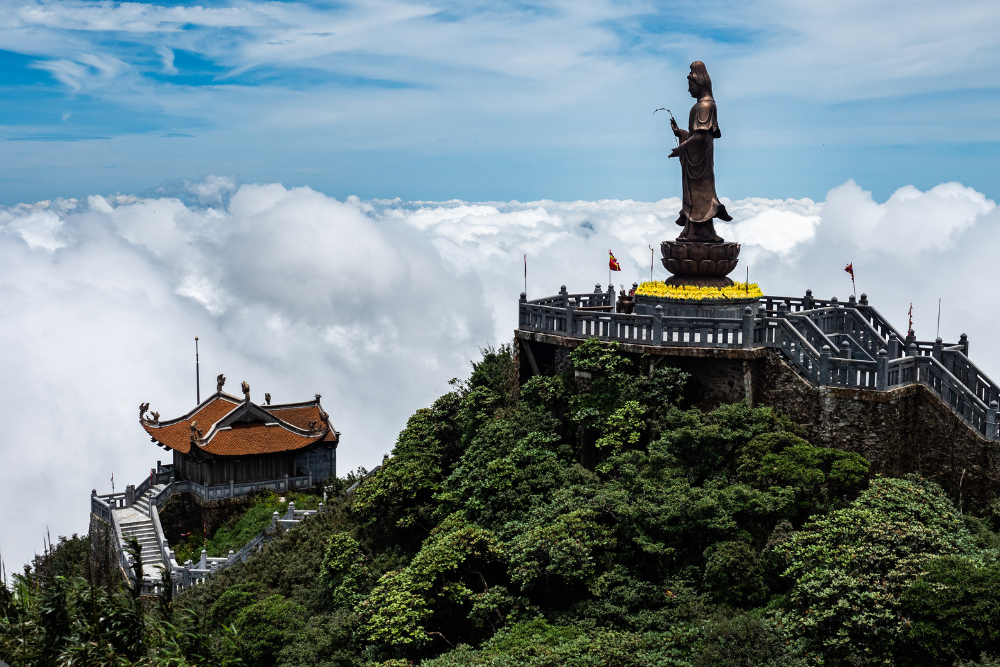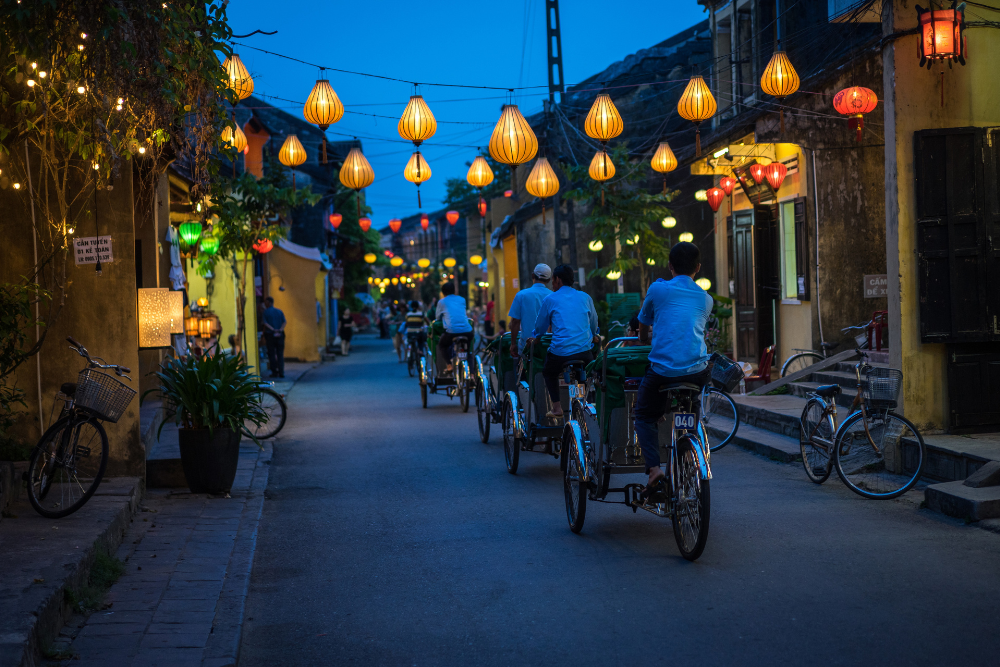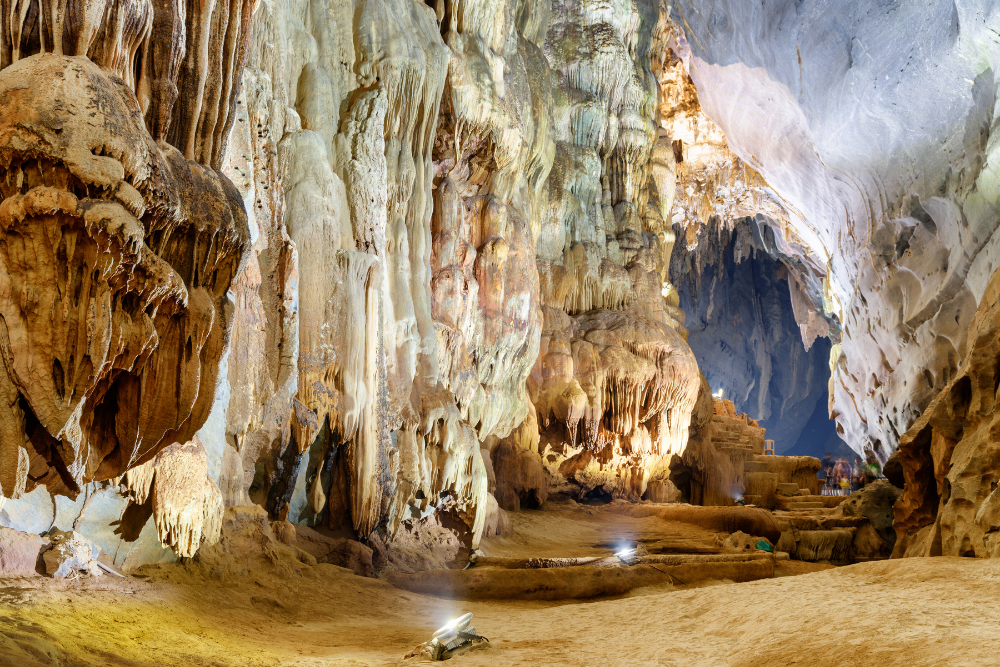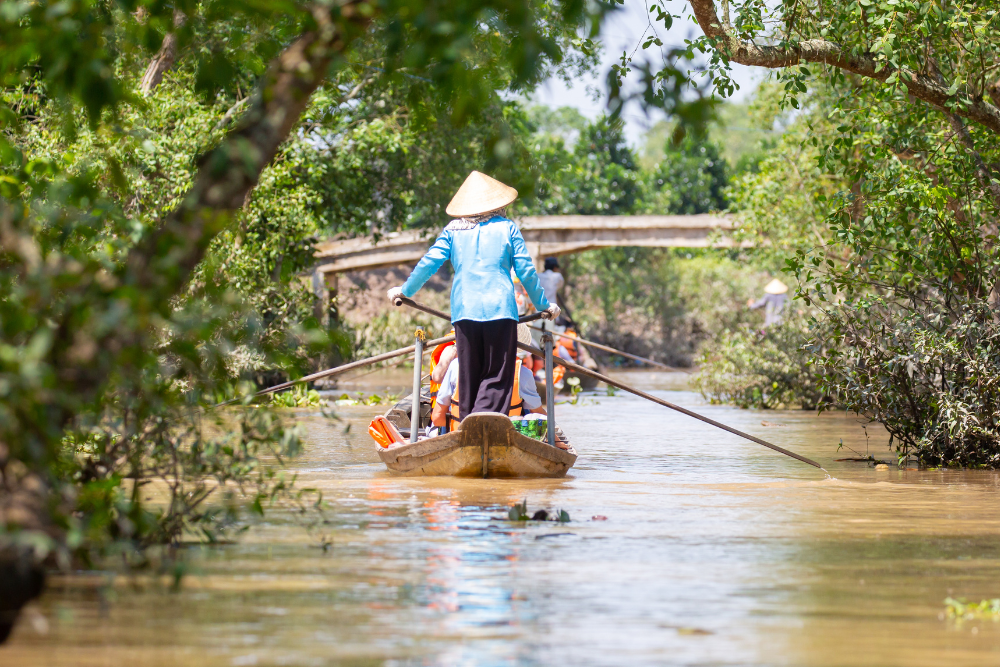Vietnam is home to breathtaking landscapes, from lush jungles and towering mountains to pristine beaches and tranquil rivers. As the country grows in popularity as a travel destination, many travelers are increasingly seeking eco-friendly activities that allow them to enjoy Vietnam’s natural beauty while minimizing their environmental impact. For solo travelers who want to experience Vietnam’s wildlife, culture, and landscapes sustainably, here are five eco-friendly activities that offer an unforgettable adventure.
1. Trekking in Sapa: Eco-Friendly Hiking and Cultural Immersion
Why It’s Eco-Friendly: Sapa, in northern Vietnam, is known for its dramatic terraced rice fields, traditional villages, and mountainous landscapes. Trekking through the region allows solo travelers to explore remote areas and connect with local ethnic minorities, all while minimizing environmental impact.
What You Can Do:
- Trek Through Rice Terraces: Take a guided trekking tour through the iconic rice terraces of Sapa. This eco-friendly activity ensures that you tread lightly on the land, supporting sustainable agriculture and local communities.
- Visit Local Villages: Meet the indigenous people of the area, such as the H’mong and Dao communities, and learn about their sustainable farming practices. Many small tours are run by local families, ensuring that your visit directly benefits the community.
- Respect Nature: Follow ethical trekking guidelines by sticking to marked trails, not disturbing wildlife, and avoiding the use of plastic during your journey. Many tours also emphasize the importance of eco-conscious travel.
Solo Traveler Tip: The cool climate and breathtaking scenery make Sapa an ideal destination for those who enjoy hiking alone. Local guides offer insights into both the cultural and environmental importance of the area.
2. Kayaking in Ha Long Bay: Exploring Limestone Karsts Sustainably
Why It’s Eco-Friendly: Ha Long Bay, a UNESCO World Heritage Site, is famous for its emerald waters and towering limestone karsts. Kayaking in Ha Long Bay offers a quiet, environmentally conscious way to explore its waters and limestone islands without disturbing the natural beauty of the region.
What You Can Do:
- Explore by Kayak: Rent a kayak and paddle through the calm waters, discovering hidden caves, grottoes, and secluded beaches. Kayaking is a low-impact activity that doesn’t disrupt the environment, unlike larger boats.
- Support Eco-Tours: Join eco-friendly kayaking tours that emphasize environmental conservation and responsible tourism. These tours educate visitors about the bay’s unique ecosystems, including its coral reefs and marine life.
- Practice “Leave No Trace”: Bring your own reusable water bottle and avoid using plastic to keep the bay pristine. Make sure to clean up after yourself and respect the environment during your trip.
Solo Traveler Tip: Ha Long Bay’s natural beauty is perfect for solo exploration. Choose a guided eco-tour for a safe and informative experience, where you can meet fellow travelers who share a commitment to sustainability.
3. Cycling in Hoi An: Sustainable City Exploration
Why It’s Eco-Friendly: Hoi An, a charming UNESCO-listed town in central Vietnam, is best explored by bike. This eco-friendly mode of transport reduces your carbon footprint and allows you to experience the town’s quaint streets, lush countryside, and local markets at a leisurely pace.
What You Can Do:
- Cycle Around the Old Town: Hoi An’s compact, car-free streets make cycling an ideal way to explore. Rent a bicycle and ride through the ancient town, visiting historical landmarks such as the Japanese Covered Bridge, old merchant houses, and bustling markets.
- Tour the Countryside: Head out to the rural areas surrounding Hoi An, where you can cycle through rice paddies, small villages, and beautiful beaches. The countryside offers a peaceful escape and a chance to connect with nature.
- Support Local Businesses: Many bicycle rental shops in Hoi An are locally owned, contributing to the community. Opt for shops that also offer guided eco-tours to learn about sustainable farming practices and the region’s environmental initiatives.
Solo Traveler Tip: Hoi An is a safe city for solo cyclists, with bike lanes and minimal traffic. Cycling is also a great way to meet other like-minded travelers in the area.
4. Visiting Phong Nha-Kẻ Bàng National Park: Caving and Eco-Tours
Why It’s Eco-Friendly: Phong Nha-Kẻ Bàng National Park, a UNESCO World Heritage Site, is home to some of the world’s largest and most spectacular caves. The park’s rich biodiversity, pristine forests, and caves are a prime location for eco-tourism, where visitors can explore underground wonders while supporting conservation efforts.
What You Can Do:
- Cave Exploration: The park offers a variety of eco-tours that focus on sustainable caving, such as the famous Phong Nha Cave and the massive Son Doong Cave, which is the largest cave in the world. These tours emphasize low-impact exploration, ensuring minimal disruption to the fragile ecosystems inside the caves.
- Hiking and Wildlife Watching: Trek through the lush jungle trails, where you can spot native wildlife, such as the endangered Vietnamese salamander or black bears. These guided eco-tours also educate travelers about the importance of preserving the park’s unique biodiversity.
- Join Responsible Tours: Choose eco-conscious tour operators who follow responsible tourism practices and work alongside the local community for conservation efforts.
Solo Traveler Tip: Phong Nha-Kẻ Bàng is a great destination for adventurous solo travelers who enjoy hiking and caving. Many tours are small and intimate, offering a chance to meet other eco-minded explorers.
5. Visiting the Mekong Delta: Sustainable Eco-Tours and Boat Rides
Why It’s Eco-Friendly: The Mekong Delta, a vast network of rivers, swamps, and islands in southern Vietnam, is a region rich in biodiversity and traditional farming practices. Eco-friendly boat tours and cycling trips in the delta help protect the environment while offering a glimpse into the lives of local communities who have lived sustainably for generations.
What You Can Do:
- Eco-Boat Tours: Take a sustainable boat tour through the winding waterways of the Mekong Delta, where you can explore floating markets, mangrove forests, and traditional villages. Many eco-tours use small, low-emission boats to minimize pollution in the delicate ecosystem.
- Cycle Around Villages: Rent a bicycle and cycle through the delta’s small villages and lush landscapes. This is a great way to see local life and connect with farmers who practice organic and sustainable agriculture.
- Support Sustainable Businesses: Many local operators in the Mekong Delta focus on environmental conservation and offer responsible travel experiences. Support businesses that are committed to sustainable practices, such as recycling, water conservation, and promoting local wildlife protection.
Solo Traveler Tip: The peaceful rivers and rural villages make the Mekong Delta an ideal spot for solo travelers looking for a slow-paced adventure. Joining a small eco-tour will give you the opportunity to meet local people and gain a deeper understanding of the region’s environmental challenges.
Conclusion: Sustainable Travel in Vietnam
Vietnam offers a wealth of eco-friendly activities that allow solo travelers to experience its natural beauty while supporting conservation efforts and sustainable tourism. Whether you’re trekking through Sapa’s rice terraces, kayaking in Ha Long Bay, cycling through Hoi An, exploring Phong Nha-Kẻ Bàng’s caves, or cruising the Mekong Delta, these eco-conscious activities ensure that your travel experience leaves a positive impact on both the environment and the local communities. By choosing these sustainable options, solo travelers can immerse themselves in Vietnam’s landscapes and culture, all while helping to preserve the country’s rich natural heritage for future generations.












